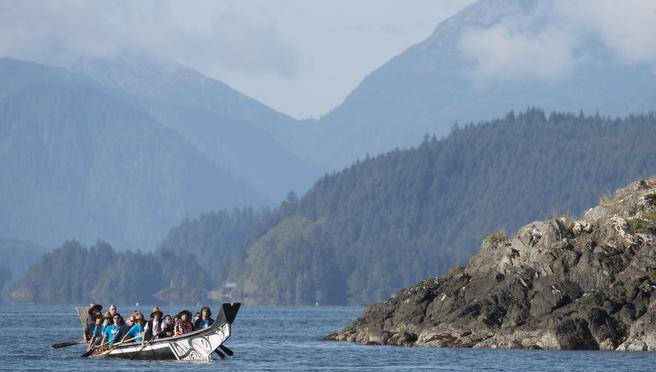
19 Nov Indigenous Peoples’ Rights and Marine Protected Areas
Featured image credit: JONATHAN HAYWARD / CP
Information in this post adapted from and originally published by Tom Ayers of the The Chronicle Herald, and was provided by Natalie Ban.
CCRN Affiliate Natalie Ban authored a new study on marine protected areas worldwide, stating urgent action is needed in Canada to make sure Indigenous rights are included in the creation and management of ocean conservation measures. Ban said with Canada recently reaching this year’s target of conserving five per cent of its oceans, and with public awareness around reconciliation with Indigenous citizens, the time is right to make gains in both areas at once.
In her study, Indigenous Peoples’ Rights and Marine Protected Areas, published this month in the journal Marine Policy, Ban surveyed published studies on marine protected areas around the world and found only 15 that included mentions of Indigenous rights.
Most came from Australia and countries around there. Only a few mentioned other countries, like Panama and the United States. One study was found in Canada. That study referred to the Gwaii Haanas National Marine Conservation Area Reserve and Haida Heritage Site in Canada, where the area’s management board consists of an equal number of Haida First Nation and federal government representatives. The federal government still has ultimate authority for decisions, Ban said, but co-management has been the practice.
Coincidentally, Canada has been ramping up announcements on marine conservation in order to meet its target of conserving 10 per cent of marine territories by 2020, and it has been placing greater emphasis on reconciliation with Indigenous people. The tripartite process of creating marine protected areas in B.C., involving the federal, provincial and First Nation governments, resulted in a co-management deal that could be a model for the rest of Canada, Ban said.
Highlights of the Study
- Marine protected areas are being established primarily to protect biodiversity.
- Indigenous peoples have inherent rights, including to marine resources.
- Marine protected areas have the potential to support Indigenous rights.
- Research on MPAs and Indigenous governance and management is limited.
- MPAs that involve Indigenous peoples achieve cultural conservation goals.
Follow the links for more information about the study or The Chronicle Herald article.


